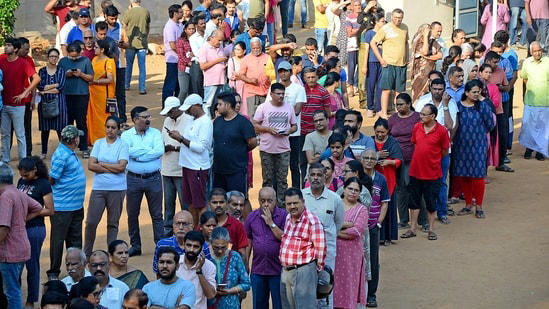The second phase of the Lok Sabha elections witnessed a tale of contrasting voter turnouts across the country, with Tripura recording the highest voter participation and Uttar Pradesh registering the lowest. This electoral divergence reflects a myriad of factors shaping voter engagement, political dynamics, and socio-cultural contexts in different regions of India. Here are 10 key points elucidating the significance of these contrasting voter turnouts:
- Tripura’s Triumph: Tripura emerged as the frontrunner in voter turnout, with an impressive display of democratic enthusiasm and participation. The state’s commitment to electoral engagement underscores the resilience of its democratic ethos and the active role of citizens in shaping the political landscape.
- Uttar Pradesh’s Challenge: In stark contrast, Uttar Pradesh, India’s most populous state, witnessed the lowest voter turnout during the second phase of polling. This poses a significant challenge to the democratic process, highlighting the need for greater civic mobilization, voter education, and outreach efforts to ensure inclusive participation.
- Regional Dynamics: The divergent voter turnouts reflect the diverse regional dynamics at play across India. While Tripura’s high turnout may be attributed to factors such as effective governance, political mobilization, and civic consciousness, Uttar Pradesh’s low turnout may stem from issues like voter apathy, logistical challenges, and disenchantment with the political system.
- Political Implications: The varying voter turnouts hold profound implications for political parties and candidates contesting in these regions. High turnout states like Tripura signal strong electoral mandates and active citizen engagement, while low turnout regions like Uttar Pradesh may witness greater volatility and uncertainty in electoral outcomes.
- Socio-economic Factors: Socio-economic disparities, including literacy rates, income levels, and access to basic amenities, play a crucial role in shaping voter turnout patterns. States with higher human development indices, like Tripura, tend to exhibit greater political participation compared to states grappling with socio-economic challenges, such as parts of Uttar Pradesh.
- Urban-Rural Divide: The urban-rural demographic divide also influences voter turnout trends. While urban centers often witness lower turnouts due to factors like mobility constraints and work commitments, rural areas, with their close-knit communities and traditional values, may exhibit higher levels of electoral engagement.
- Electoral Infrastructure: The availability and accessibility of electoral infrastructure, including polling booths, voter registration facilities, and transportation networks, significantly impact voter turnout rates. States with well-developed electoral infrastructure, like Tripura, are better equipped to facilitate widespread participation.
- Political Mobilization: Effective political mobilization campaigns, including door-to-door canvassing, rallies, and voter awareness drives, can significantly influence voter turnout. Political parties and civil society organizations play a pivotal role in galvanizing support and mobilizing voters, especially in regions with historically low participation rates.
- Ethnic and Caste Dynamics: Ethnic and caste-based considerations also shape voter turnout patterns, particularly in states with diverse social compositions like Uttar Pradesh. Factors such as identity politics, community mobilization efforts, and historical grievances influence voter behavior and electoral outcomes.
- Democratic Imperative: Regardless of regional variations, voter turnout remains a cornerstone of democracy, reflecting the health and vibrancy of the electoral process. High turnout states exemplify the robustness of democratic institutions and the active engagement of citizens, while low turnout regions underscore the need for concerted efforts to strengthen democratic participation and inclusivity.
In addition, the divergent voter turnouts witnessed during the second phase of the Lok Sabha elections highlight the multifaceted nature of India’s electoral landscape. While Tripura’s record-high turnout signifies democratic vibrancy and civic engagement, Uttar Pradesh’s low turnout underscores the challenges of ensuring inclusive participation and political mobilization. As India continues its democratic journey, addressing these regional disparities in voter turnout remains essential for fostering a more representative and participatory political system.



